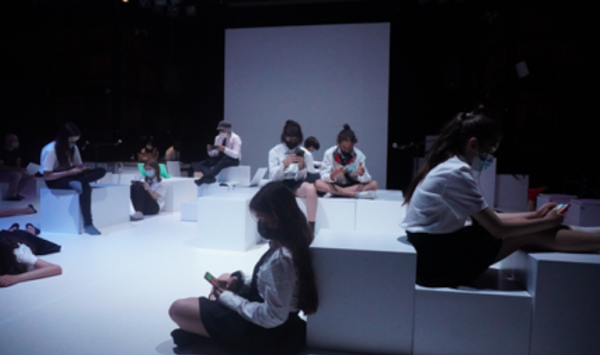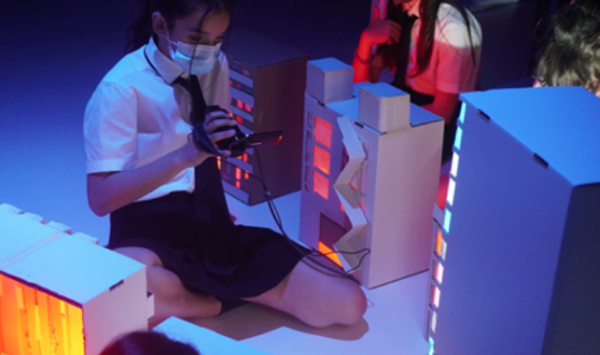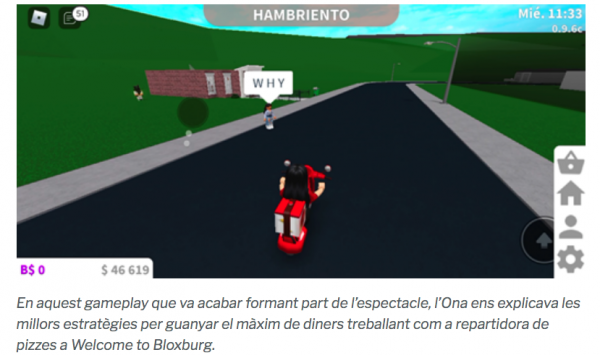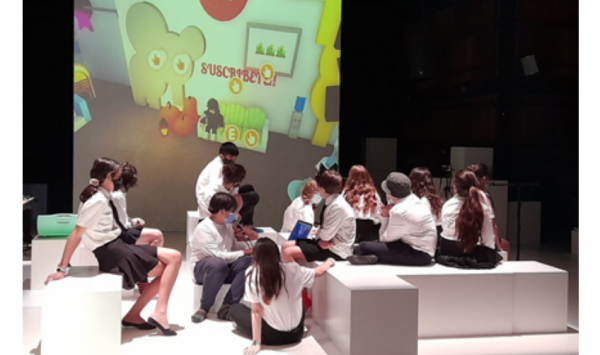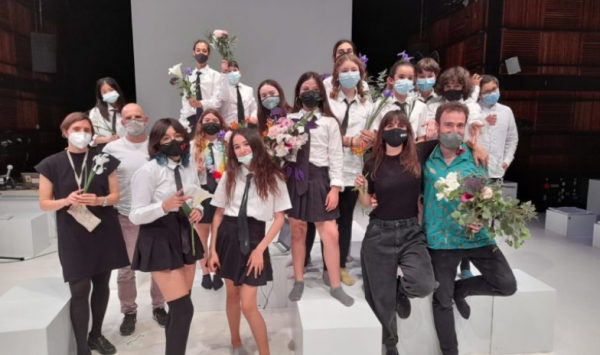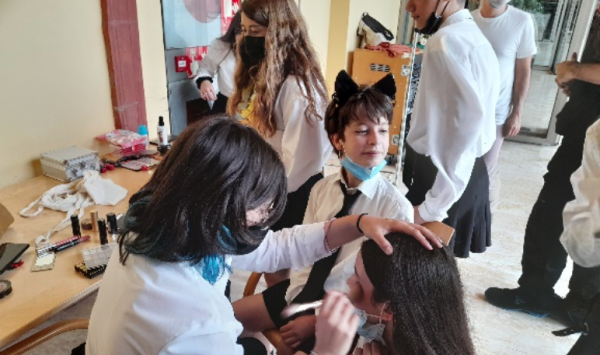- 14th EDITION 2022 / 2023
- 13th EDITION 2021 / 2022
- 12th EDITION 2020 / 2021
- 11th EDITION 2019 / 2020
- 10th EDITION 2018 / 2019
- 9th EDITION 2017 / 2018
- 8th EDITION 2016 / 2017
- 7th EDITION 2015 / 2016
- 6th EDITION 2014 / 2015
- 5th EDITION 2013 / 2014
- 4th EDITION 2012 / 2013
- 3rd EDITION 2011 / 2012
- 2nd EDITION 2010 / 2011
- 1st EDITION 2009 / 2010
Marc Villanueva IN RESiDENCE at the School Maria Espinalt
The lights come on when we leave school
PUBLIC PRESENTATION – The lights come on when we leave school
On 26 May, The lights come on when we leave school process was presented to the public. The piece was presented at Espai Lliure on the same stage as the family show Frank that was taking place on the same day. This piece had maximum capacity for 30 people and in order for the maximum number of people to be able to enjoy the function, it was the students themselves who decided to hold three sessions on the same afternoon. There was a general rehearsal the week before and then another one with an audience the day before.
It is of note that each scene came from an impulse or intuition that had come up during the classroom or in the rehearsal room. The show consisted of a series of scenes that explored the topic from the different angles worked on throughout the process, interviews in which they explained their day-to-day in video games, hair-raising advice on how to become a millionaire within a game, an audiovisual journey through the Poble Nou neighbourhood, a choreography inspired by Fortnite... All with the interdisciplinary, diverse and contemporary execution of the performing arts.
In order to understand the piece, here are the words of Marc himself, which can be found on the blog:
In a sense, it seems interesting to do a little bit of archaeology regarding the show that we have just presented, to see how each scene came about from an impulse or intuition that came up in the classroom or the rehearsal room during the creation process. The interviews that we carried out at the beginning and the videos that we recorded of the neighbourhood became a model of the buildings of Poble Nou that they travelled through with a live camera recording, and in which the videos appear in the windows on their mobile phone screens; an idea born of a comment made by Ona while we were doing interviews, she said that they were like ‘small stage plays passing through different areas of the city’. The idea of mixing reality and fiction with a series of self interviews in which each student explained the video game that they played in the first person, as if it were a normal job, originated from a camera exercise, that was introduced based on a presentation that Ninna had made on how to become a millionaire.
The same statement proposed by Ninna (how to become a millionaire) took us to the world of YouTubers, who give advice on how to obtain the maximum amount of virtual money in a video game and this ended up becoming a scene in which Ona and Valeria “broadcast” the advice from a tutorial that they had found on YouTube on how to become rich by delivering pizzas and they realised how terrible it would be if it were applied in real life: from always being in a good mood to working until your mood was as low as it could go. The character selection screen for Fortnite, like many other games, inspired one of the more fun scenes of the piece, in which Tadeo, Iker, Mario, Armand and Ona, directed by Ninna and guided by Nisha's soundtracks brought several of the choreographies based on the characteristic Fortnite dances to life. This was one of the last scenes that we did, and they proposed and directed it themselves with no assistance whatsoever, and it left everybody wanting more. Also from gaming and fun was an impressive final choreography with pom-poms which Berta, Sara, Lara and Mar prepared and rehearsed themselves.
The inner workings of the virtual world as a refuge and place for free expression became exposed in a magnificent scene, in which Maxi opened the doors of his home, a multi-millionaire mansion that he had bought with virtual money inside the game Adopt Me, that he had decorated and organised in painstaking detail, with all the extravagance of millionaire, three fire places, two grand pianos “that are of no use to me whatsoever”, a swimming pool with a trampoline and even a home cinema. A modern-day dolls house where all the conversations and debates we have had about work, wealth and money acquire a new meaning. As he explained, he was working on and putting all his efforts into building and decorating this house, because the house where he lived was very small.
Maxi's house became a stage play within a stage play, a virtual world brought to the stage that added to all the other material and capsules that we had been working on which ended up forming a collage of multiple interpretations of the topics and questions that we had been discussing, in one way or another, since the beginning of the process. In the end, as Berta said, the lights came on and it turned out that we had been doing theatre even though it was in a different manner to what they were more used to.
Asking oneself what theatre is depends not only on the topics that we chose or how they were tackled, it was also associated with understanding that theatre is much more than “acting” and involves many more languages and abilities. Right from the very beginning, for me it was very important that it was understood that these technical, playwright or scene setting aspects were by no means secondary, and that either one of these areas was its own individual area of artistic expression. In this sense, we did everything: we came up with ideas and references together, we discussed the contents of the piece, we learned how to record videos with a camera and correctly set up a tripod, we edited videos, wrote scripts and learned how to set up spotlights and light the stage. We were able to squeeze out all the musical and sound potential of many of the students, and in fact they ended up specialising in this area; Ninna composed a song, Nisha learned how to use a mixing table, Ziyu learned how to do a live video and both Ninna and Mario ended up discovering the stimulating world of manipulating sound live, creating loops and adding effects and distortions”.
Marc Villanueva

